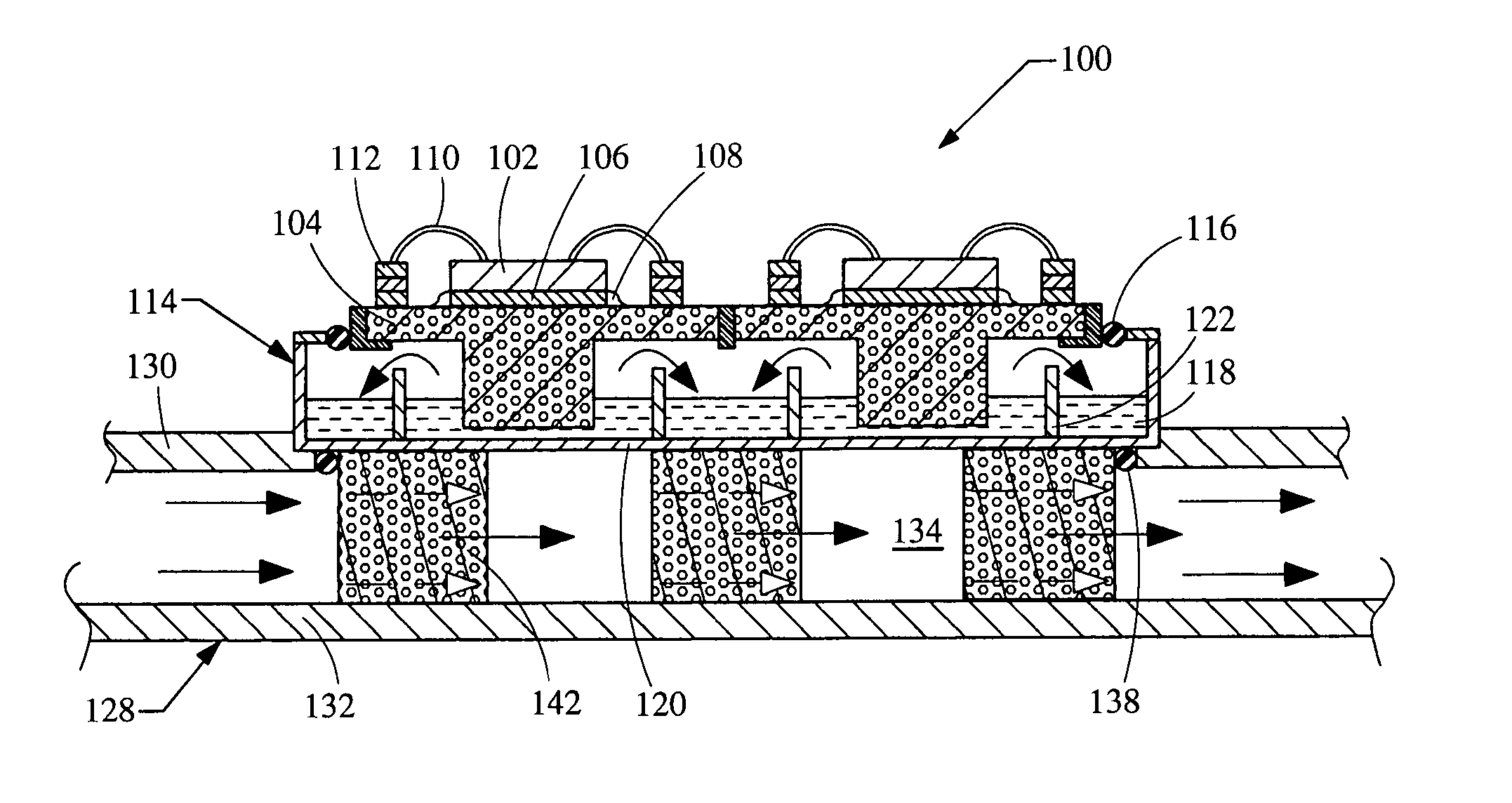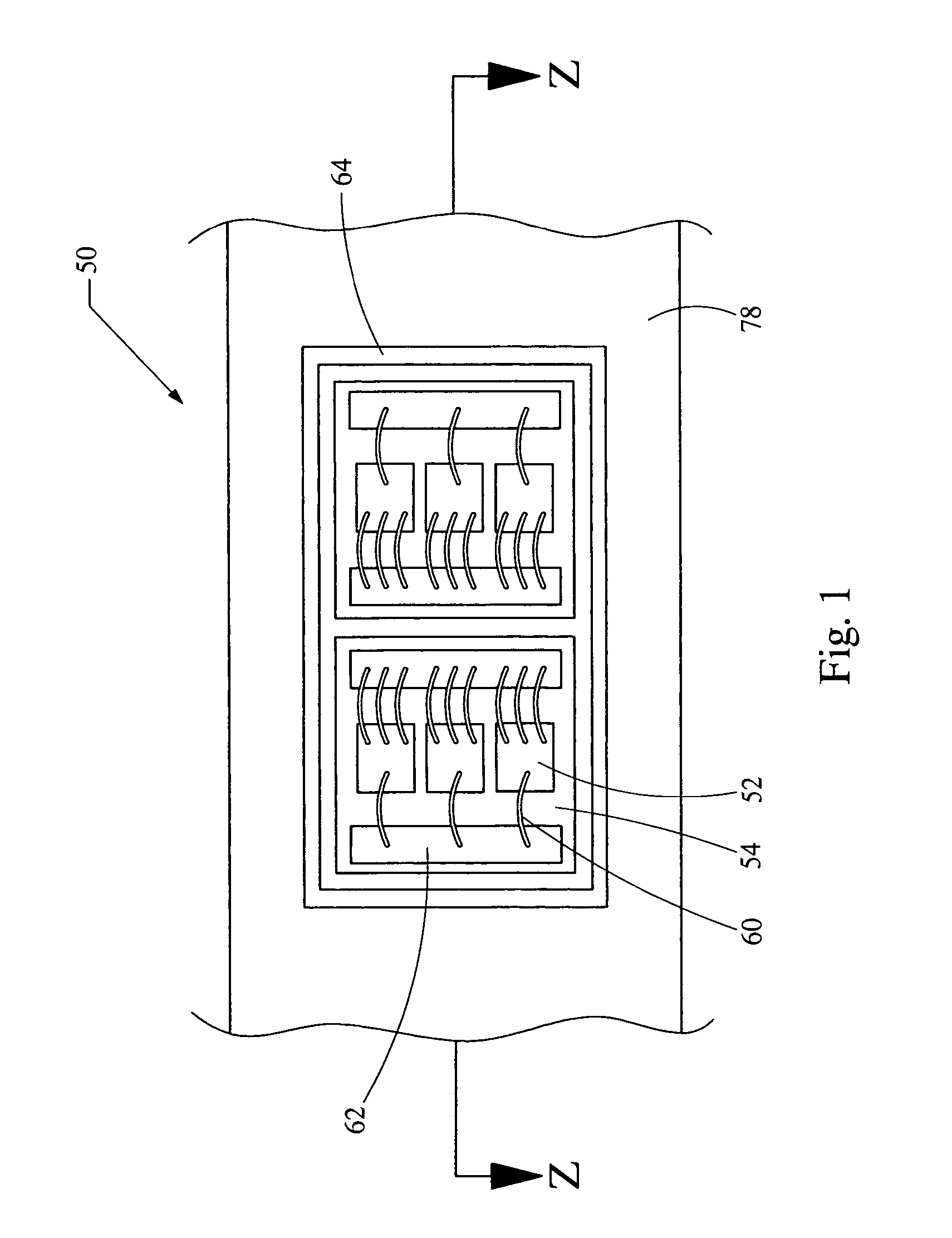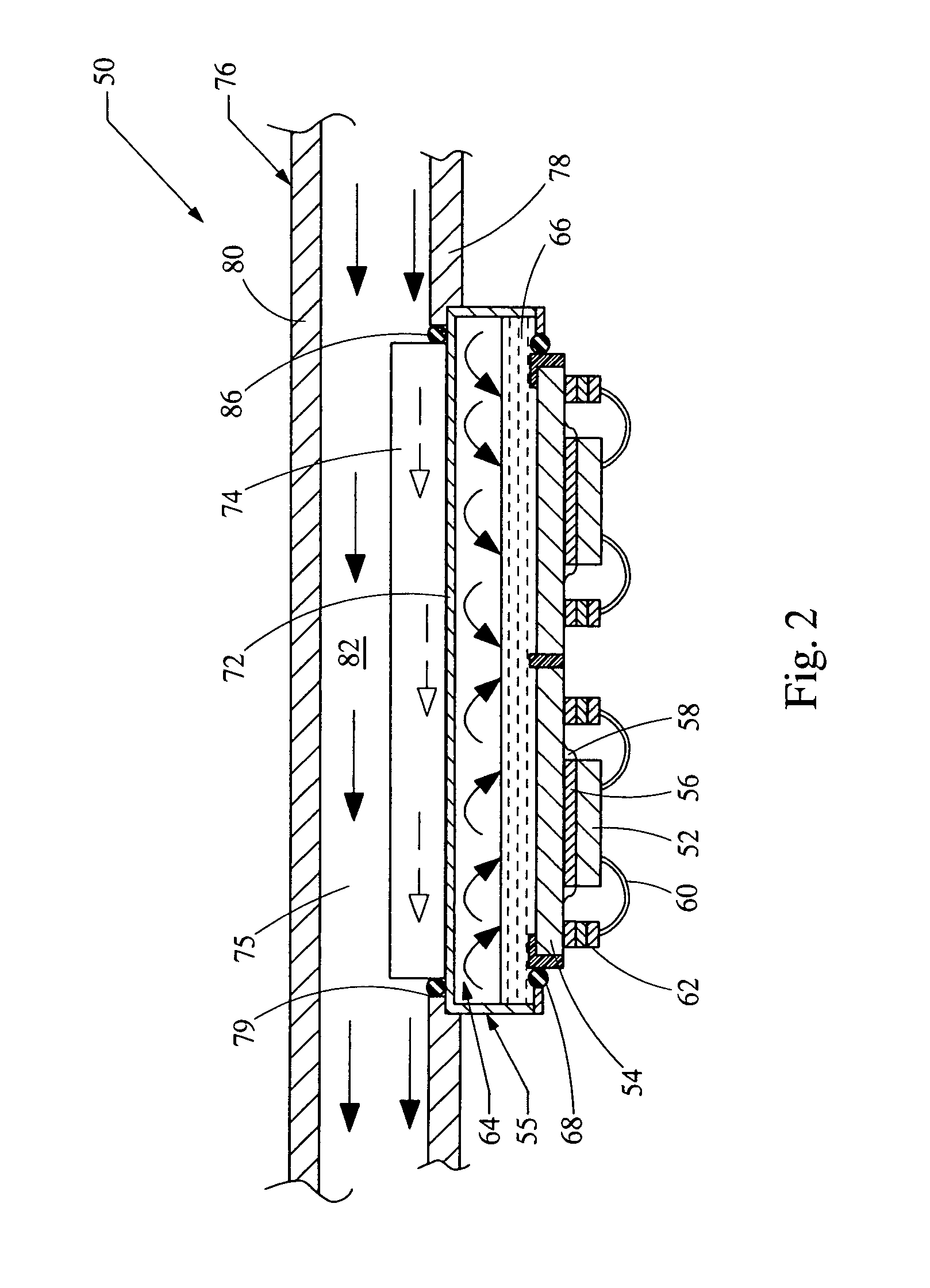Dielectric thermal stack for the cooling of high power electronics
a technology of dielectric thermal stack and high-power electronics, which is applied in the direction of cooling/ventilation/heating modification, semiconductor device details, semiconductor/solid-state device details, etc., can solve the problems of junction temperature rising to a level where the device fails to function, devices and interconnects may also fail, and the device and interconnect may also fail. to achieve the effect of improving heat transfer, increasing surface area and increasing surface area
- Summary
- Abstract
- Description
- Claims
- Application Information
AI Technical Summary
Benefits of technology
Problems solved by technology
Method used
Image
Examples
Embodiment Construction
[0017] Referring now to FIGS. 1 and 2, a system embodying the principles of the present invention is illustrated therein and generally designated at 50. The system 50 includes a die 52, a substrate 54, heat sink 55 containing a first fluid and a base 76 containing a second fluid 82.
[0018] The die 52 is electrically connected to bond pads 62 formed on the substrate 54 through the wire bonds 60. The die 52 is thermally connected to the substrate 54 using a phase changing or liquefiable solder 56. Alternatively, this thermal connection may be made through more common solder or thermally conductive adhesive. When phase changing solder 56 is used, a sealant 58 is attached between the die 52 and the substrate 54 and configured to encapsulate the liquefiable solder 56. However, other more common attachment techniques may be used. The substrate 54 is made of a material with good thermal conductivity. Metal, specifically copper, is an example of an appropriate material for the substrate 54....
PUM
 Login to View More
Login to View More Abstract
Description
Claims
Application Information
 Login to View More
Login to View More - R&D
- Intellectual Property
- Life Sciences
- Materials
- Tech Scout
- Unparalleled Data Quality
- Higher Quality Content
- 60% Fewer Hallucinations
Browse by: Latest US Patents, China's latest patents, Technical Efficacy Thesaurus, Application Domain, Technology Topic, Popular Technical Reports.
© 2025 PatSnap. All rights reserved.Legal|Privacy policy|Modern Slavery Act Transparency Statement|Sitemap|About US| Contact US: help@patsnap.com



